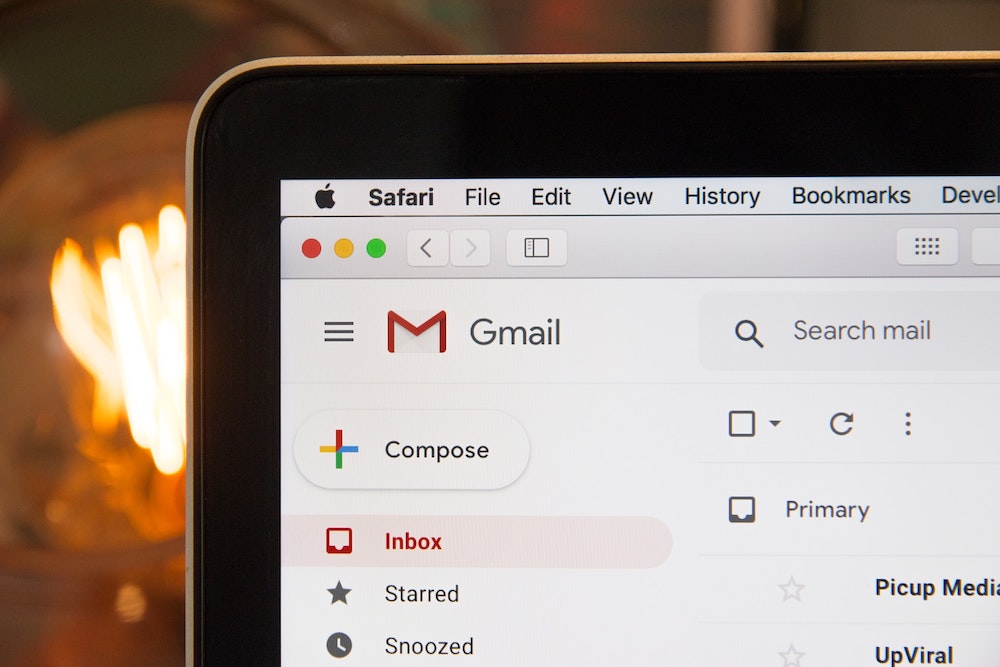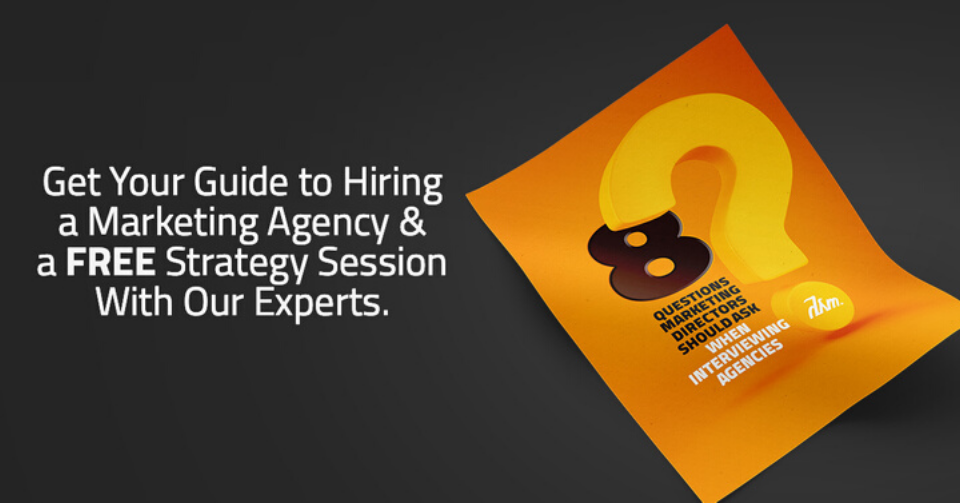Here’s the cold hard truth: Any type of advertising has the potential to effectively promote your company. However, whether or not you should pursue one strategy over another comes down to what your goals are, who you’re trying to reach, and what your offer is.
At the end of the day, any marketing channel can produce results for your company. With all of the different possibilities out there, the key is to focus on the core channels that will work best for your business that will end up impacting the bottom line.
If this sounds overwhelming, you’re not alone. Even the best marketers struggle to keep up with the ever-changing world of digital advertising.
To help, we’ve broken down some of the most popular forms of advertising (in plain English, we might add) to help you reach your peeps in the most efficient, cost-effective way possible.
Social Media
 Social media marketing is one of the most effective ways to connect with your ideal customers online.
Social media marketing is one of the most effective ways to connect with your ideal customers online.
Why? It all comes down to attention.
And the fact of the matter is that basically everyone today is on social media and has their eyes glued to their screen.
That’s why it’s critical for you to have a presence on the key platforms that your customers are on. You need to meet them where they are.
Whether you are looking to build an organic following or start running paid ads, social media platforms like Facebook, Instagram, LinkedIn, YouTube, Pinterest, Snapchat, TikTok, and even a few others likely offer a ton of opportunities to your business.
So, how do you get started using social media to promote your company online?
We’ll give you our advice on how to go about both free and paid social media marketing below. But first, you need to understand who your customers are and where they hangout online.
Once you know who they are and what they’re interested in, you can choose the social platform that best matches and start creating content or running ads to get their attention.
Organic Social Media
Organic social media is simply all of the posts you see in your news feed from both your friends and companies you follow. It’s classic social media.
Whether we’re talking about Facebook, Instagram, LinkedIn, or TikTok, every platform lets both individuals and businesses create a profile and start posting for free.
Of course, there are pros and cons to using organic social media to promote your company.
First, the positives.
It’s great for helping you build a loyal online following and distributing content such as videos, blogs, and case studies. You can provide helpful resources to your followers and build up brand awareness by engaging with them in the comments.
By consistently posting, your brand will be perceived as credible and trustworthy by potential customers and help you move them down your sales funnel.
While the core of social media has remained the same, there are always new features being introduced that will help you connect with your audience.
For example, both Facebook and Instagram (and even LinkedIn and YouTube) have added live streaming and stories to their platforms, allowing you to engage with your audience in a whole new way.
“Going live” can be a great way to quickly interact with your followers and show them how your product/service can help improve their lives. It’s a great way to quickly produce content as it requires little setup, scripting, or post-production editing. And it allows you to speak directly to your audience and answer their questions.
Taking advantage of live streaming can help your company build up your likability and trustworthiness and put a human face to your brand.
Stories are also worth getting to know as it can be another great way to grab your audience’s attention. They have become just as popular as posts from the regular newsfeed, so this is an area you don’t want to miss.
Facebook and Instagram stories can be great for putting up short-form content. We especially like that you can create polls, quizzes, and take questions from your stories to engage with your audience and start a conversation.
However, building an audience organically on any platform requires a huge time investment and you need to be consistent with your efforts.
To do organic social media right and actually drive meaningful results for your business, you can’t just schedule posts and call it a day.
It’s not a “tactic” but rather a shift in your marketing philosophy, and it will take months to even a year or two to really see results.
However, once you have thousands of followers online who know, like, and trust your brand due to your social media efforts, you will have a much easier time selling to them.
Paid Social Media
Paid social media marketing is one of the most popular ways to drive traffic to your website and generate leads.
The great thing about it is that it allows you to bypass all of the heavy lifting needed to reach thousands of people on these platforms using organic social only. And you can choose to spend however much you want.
Meaning no matter the size of your business or your budget, there’s plenty of opportunities for you to get in on the action.
That’s a pretty sweet deal as far as we’re concerned.
So, what exactly is paid social?
The details vary by platform, but long story short it lets you run highly targeted ads to your ideal audience so you can get in front of them with the right message at the right time.
There are two main things that make paid social media ads so effective. The first is the targeting capabilities of the platforms that let you show your ads to people who have already shown an interest in your product or services or match the demographic groups you are trying to reach. Facebook alone has 52,000 data points on each user.
No matter how niche your company is, trust us when we say it’s not niche enough for Facebook.
The second is the lead generation abilities these platforms present to your business. An ad is very similar to a regular post, so you’re free to use engaging copy and any creative images and videos your team can whip up to grab people’s attention and get them to convert to your offer.
At the end of the day, marketing (digital or not) essentially comes down to audience and offers. Facebook, Instagram, LinkedIn, Snapchat, TikTok have tons of data on each user, allowing you to target the exact type of person that would be interested in your services. And you have the ability to tailor your offer based on that person’s interests and behavior.
Social Media Case Study
LG Protective Wearables came to us at the onset of the COVID-19 outbreak to help them use social media to drive sales of their personal protective equipment (PPE). We were able to target and test audiences like salon workers, teachers, and even grandparents.
After a few weeks of testing and optimizing, we found our sweet spot.
Every important KPI started going through the roof—click-through rates, on-site conversion rates, average order value, daily orders, Return on Ad Spend (ROAS), and their overall ROI from the engagement with DSM.
Less than 90 days into our engagement, we did over $100,000 in gross sales in a single month.
Read more in this social media case study.
Pay Per Click (PPC) Advertising
Now, social media isn’t the only way to get in front of your customers online. Far from it, in fact.
What if we told you that not only are there other ways to get in front of your ideal customers online, but you can do it right when they are researching a product or service and are ready to make a purchase?
Yes, it’s true. Enter Google Ads.
Google Ads is Google’s Pay Per Click (PPC) advertising platform. With PPC, you only pay when a user actually clicks on your ad, which will end up saving you a good chunk of change (your CFO definitely just did a low-key fist pump there).
Similar to paid social media ads, Google Ads lets you bypass all the SEO work needed to rank your website at the top of Google and instead go to the top of the search results for any keyword you want to target. It’s like getting a Fastpass at Six Flags, only probably not as exciting.
Getting started with Google Ads and PPC advertising is relatively straightforward. You just tell Google what keywords you want to target, what your daily budget is and then you begin writing headlines and descriptions of your business and its core offerings that will be shown to people when they search for those same keywords.
Of course, there is a ton more that goes into it, but this is a simplified version of it.
What’s great about PPC ads is that not only do you only have to pay for ads that actually get clicks, but it’s easy to track results and measure ROI. Google Ads offers tons of insights into what ads and keywords are getting you conversions, and with that information, you can keep adjusting your campaign to keep the leads flowing.
Google also provides you with an overall “optimization” score for your campaigns. This is Google telling you how well put together your campaign is on a scale of 1%- 100%. As Google learns more about your campaigns, it will recommend different ways to optimize your campaigns to improve performance. Thanks, Google!
Google Ad Case Study
A luxury apartment group came to us looking for help driving new tenants to their apartment buildings in Central and Northern New Jersey. Once we got access to their Google Ads account, we were able to improve their overall optimization score from the mid 50’s to over 90%.
We increased their account-wide Click Through Rate from under 3% to about 10%, and dramatically decreased their cost to acquire a lead, from $131 to about $30. Read more in this Google Ad case study.
Print Media
Although a number of businesses have started to reallocate their advertising budgets entirely towards the world wide web, never count out print media as an advertising platform.
Even though the question has been raised whether print advertising is still worth the pretty penny or not, it is still a viable option.
For one, print media is tangible. The shelf life of online advertisements is short-lived at best while print advertisements have the potential to stick it out until Charles Barkley gets a halfway decent golf swing (debatably never).
The physical nature of print can really help your brand stand out and reach those members of your target market that don’t spend a ton of time online.
Print ads also act as a security blanket of sorts. With a mind-boggling number of online ads lurking around every corner of cyberspace, it’s hard to determine whether you’re being offered an actual product or you’re one click away from introducing all sorts of malware to your operating system.
In effect, you generally avoid clicking on them altogether. I can’t guarantee there’s nothing gimmicky about a print ad, but I can promise it’s not at all spammy or a danger to your well-being.
Although the cost to reach 1,000 people via newspaper or magazine is expensive as all sin at $20-$30, prices are dropping due to the movement away from print media advertising. This is advantageous to both your product and your wallet because, with fewer print ads in the mix, your ad can take center stage.
Up your game by mixing channels within a single advertisement with the addition of QR codes that will redirect users to your homepage, a landing page, or give them access to a special offer.
Print Ads That Turn Heads
Sal Lauretta for Men is a local high-end men’s retailer based in Bergen County. Being seen in the local glossy publications like 201 and BC the Mag is critical to staying top of mind with their ideal customers.
Read more about our traditional and digital marketing work in this case study.
Television
While digital marketing has become the go-to for advertisers looking to quickly generate leads and grow their online following, that doesn’t mean there isn’t still a place for the good old television.
Whether it be national or local broadcasting, television advertising has the potential to reach a larger number of people, as opposed to smaller audiences associated with local newspapers and radio stations.
A study performed in 2010 showed that Americans on average spend 4.5 hours per day watching television, while only spending 96 minutes listening to the radio and 30 minutes a day reading newspapers (My question – where the hell are you people getting this kind of time?).
Before you emit a resounding “huzzah” because you think you’ve found the almighty advertising medium, know you’re most likely about to blow your advertising budget into smithereens. On average, a 30-second commercial will run you on average over $300,000 on a national television network. Yikes.
Although the prestige of having a commercial gives your product or service instant credibility, the process of getting this short clip up and running is terribly slow and time-consuming. In addition, you can choose channels that you think would best fit your demographic. But due to networks’ lack of feedback, you can’t guarantee that your targeted audiences are seeing your commercial.
But these days, even TV is going digital. For one, YouTube is now one of the most popular video services out there and has effectively replaced TV for millennials and Gen-Z.
It has nearly 2 billion users, is the world’s second-largest search engine (behind Google), and the average watch time in nearly 40 minutes per user. Smart TVs and streaming devices brought the YouTube experience to the big screen several years ago.
And ever since, YouTube has become a viable option for businesses looking to get in front of people while watching TV, but need advanced targeting capabilities and have more options for their budget.
Radio, Podcasts, and Streaming Audio
 When it comes to reaching consumers when they are listening to content, the game has changed dramatically over the last decade.
When it comes to reaching consumers when they are listening to content, the game has changed dramatically over the last decade.
For one, the booming popularity of podcasts has effectively replaced radio amongst younger consumers. And streaming music through Spotify, Apple Music, and Amazon Music is now the most common way to listen to music. When was the last time you bought a CD? Yeah, we don’t remember either.
This is good news for your company. The diversity of podcasts means your audience is likely tuned in to a few different shows that fit your niche and industry. If you were to sponsor a podcast and have your ad read by the host during the show, you will be able to reach potential customers while they are already engaged and primed to be thinking about topics related to your services. And since the ad is being read by a host who they like and trust, it will make it very easy for you to gain instant credibility with them.
On the streaming audio side, the free versions of both Spotify and Pandora allow you to run ads to consumers in-between songs. While this may be a more niche use case and be dependent on the type of business you run, rest assured that both of these platforms offer the detailed targeting you’ve come to expect from every digital marketing channel.
You can start by targeting listeners by their demographic information, such as their age, gender, and location. From there you can fine-tune your audience by what type of music genres and podcast categories they tend to listen too. And you can even take it a step further with more advanced context targeting such as advertising to people who are listening to themed playlists (such as cooking, studying, relaxing, etc.) which allow you to fit your message into the state of mind your listeners are in.
Now, while all of the targeting options of streaming audio and podcasts are great, sometimes you just need to reach a really broad audience that fits your demographic. That’s where radio comes in.
You can reach a more niche audience with radio airtime than you can with television advertising. Radio stations schedule different musical programs and talk shows to target different interest groups, giving advertisers the opportunity to hone in on the demographic they’re trying to reach.
Radio doesn’t require the large scale production process that goes into creating a commercial. Make your commercial a DIY project, or spend a few extra dollars to get a creative development to record something snazzy for the airwaves. Compared to advertising via newspaper or television, radio advertising is a bargain hunter’s dream.
One of the main drawbacks of radio is that it often serves as background noise for whatever mundane activity you’re doing. Unless the listener is engaged in a particular newscast or jamming to Justin Beiber’s newest hit single, your content may not be reaching your audience’s ears.
Direct Mail
Although digital marketing has been basking in the limelight for quite some time, it’s impossible to hit all of your target audiences via the internet.
In a heated battle between email and direct mail advertising strategies, Marketscan rung in that there are only registered email addresses for 20% of postal addresses, which means 80% of the market is still at large.
Advertising via direct mail can be highly targeted and personalized. Businesses can purchase mailing lists and reach smaller market segments based on demographic analytics. For example, you’ll probably get a decent response rate from single women over 35 years in the New York City area with a brochure advertising premium cat litter.
Additionally, you can easily differentiate your direct mail from other generic offers by adding a potential customer’s name to the greeting. Colleges and universities are prime examples of using personalization in their direct mail advertisements to cater to the ethos of prospective students.
The success rate of direct mail is also very measurable – you receive a response or you don’t. By including a special offer with an expiration date for your product or service, you can easily keep tabs on the profitability of your direct mail advertising campaign.
Looking for a place to get started with direct mail advertising? A good place to begin can be simple thank you notes sent out to all of your customers at the end of the year around the holidays.
By taking just a few minutes to write a quick note of appreciation, you’re making a lasting impact on a customer that cuts through all of the digital messages and ads they see on a daily basis.
Email Marketing
 Is email marketing still a thing? Yes – and in fact it’s bigger than ever. While many have been predicting the death of email for years now, the truth is it’s still the most ROI positive marketing channel today, with an astounding 3,800% Return on Investment by average.
Is email marketing still a thing? Yes – and in fact it’s bigger than ever. While many have been predicting the death of email for years now, the truth is it’s still the most ROI positive marketing channel today, with an astounding 3,800% Return on Investment by average.
Why is email marketing so effective? It all comes down to your subscriber list and how you can use the power of smart email marketing to move potential customers down your sales funnel. As they say, the money is in the list – and this is as true as ever today.
You can get email subscribers by offering a piece of premium content (such as our 8 Questions Marketing Directors Should Ask When Interviewing Agencies) that can be downloaded in exchange for a person’s email address. We call this a “lead magnet” (get it?).
You can also add Call-to-Actions and sign up forms throughout your website to start building out your email list. This is a long term effort, but with the numbers clearly showing that email marketing is one of the most effective types of advertising your company can pursue, it’s worth it.
Now, once you get someone to subscribe to your list, the relationship has changed. These people have essentially raised their hands saying they want to hear from your business and are giving you permission to email them directly.
Why is this a big deal?
For one, you know these people have an interest in your company, so it makes sense to keep the conversation going with these warm contacts.
And, because you are emailing them (as opposed to running ads or posting on social) you can reach them directly in a far more personal manner with far fewer distractions if they were on another platform.
But even bigger is the fact that your email list is something your company owns completely.
Meaning, you aren’t forced to play by the rules of Facebook or Google, where a slight change in their algorithm overnight could send your traffic tumbling. It’s the ultimate insurance plan for your marketing.
Email marketing continues to evolve. No matter what provider you choose, all of the major platforms offer the ability for smart segmentation and customizing your conversation with each contact based on what actions they’ve taken on your website. It’s no longer about sending out a “blast” to your list. Rather, it’s about having a human conversation tailored to your prospect.
Are you starting to see how for every $1 spent on email marketing, companies are able to generate $38 in revenue?
If you’re struggling to close the loop on sales, email may be the missing link. The beauty of implementing a smart email marketing system is that it will allow you to heavily automate your sales system and make your sales team much more effective at their jobs.
Concluding Thoughts on Which Types of Advertising is Most Effective
As you can tell by now, there is a seemingly endless amount of marketing strategies and methods that you can use to promote your company. Which ones will be most effective for you will ultimately come down to who you are trying to reach, what your offer to them is, and which advertising channel you use to reach them.
Remember – all of the advertising tactics discussed in this post have the potential to work. But whether they will or not ultimately depends on what your strategy is and if you execute correctly on that strategy.
As Einstein said, “In theory, theory and practice are the same. In practice, they are not”.
Looking for a little help turning your marketing theories into big-time results for your companies? Book a strategy session with a member of our team and we’ll help you out.






